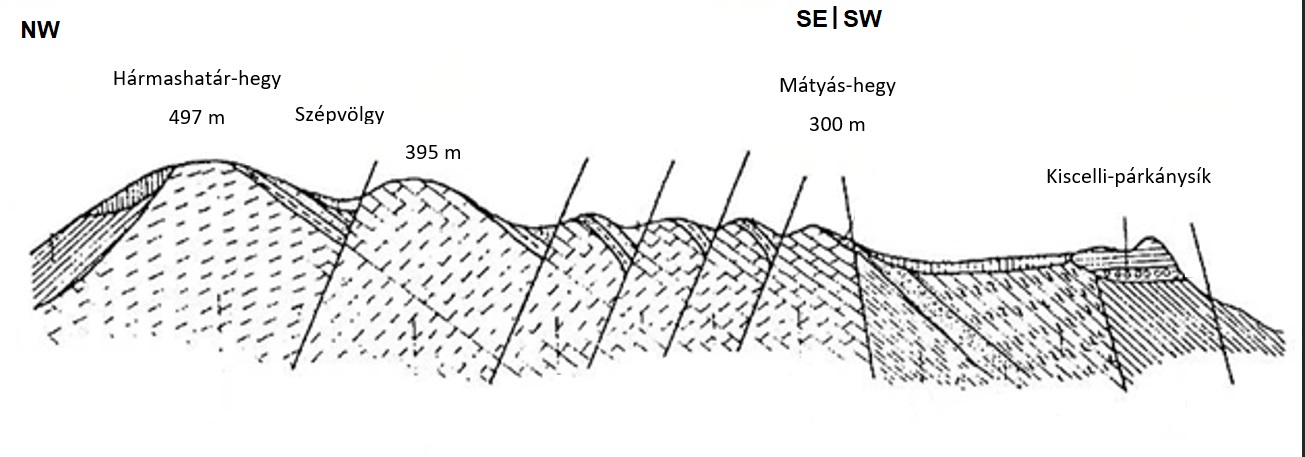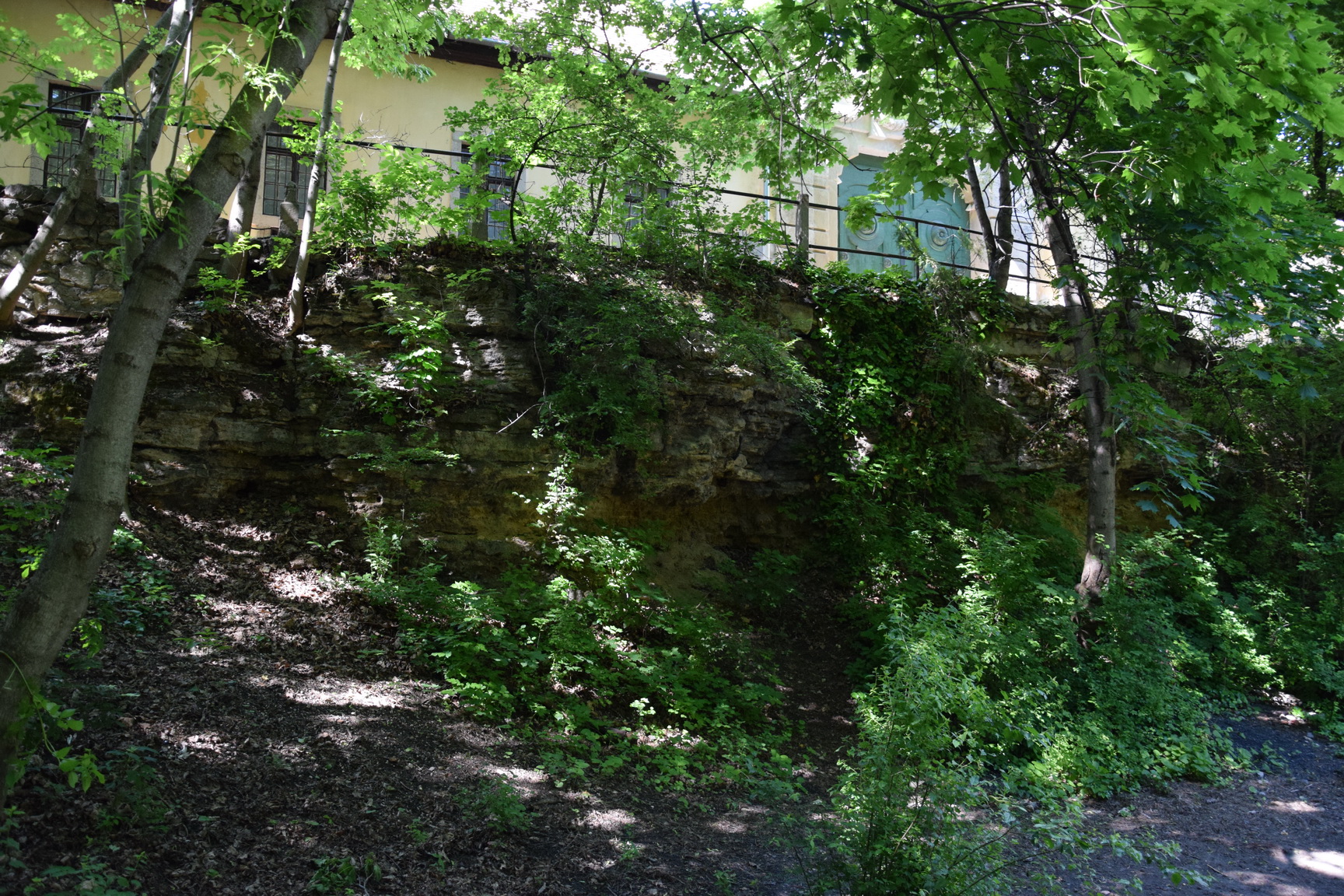Freshwater limestone terrace
Geological background of the area:
The present surface was created by seeding along the subsided slopes from the Three Border Mountain to the Kiscelli plateau, as shown in the following image:

The structure of the Kiscelli plateau:

- The bedrock is Upper Triassic dolomite (basically the area is karstic);
- Middle Oligocene Kiscelli clay (Number 1 on figure);
- Pleistocene sandy-clay gravel (2);
- Spring limestone protected the hillside from the Danube (3);
- Old Holocene plain (4).
The freshwater limestone:
There are many synonyms for freshwater limestone, such as spring limestone, limestone tuff, traventino, or lake limestone. It was formed from spring water 1-2 million years ago during the Pleistocene Epoch, by chemical precipitation or plant mediation.

In the trail area, freshwater limestone is naturally exposed in several places due to eroded loess, but the formation seen at the station is the result of anthropogenic activity.
The source limestone was extracted from the site as a construction material, and thus, in addition to its geological value, it also preserves the cultural heritage of the area, which was also the site of clay and limestone mining.


